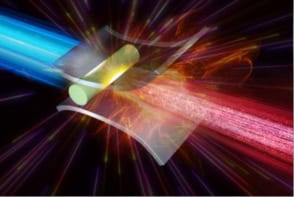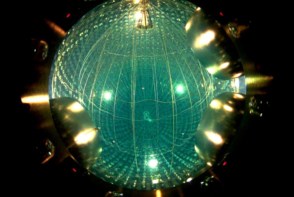
Two new technologies that use laser frequency combs to detect natural gas leaks have been unveiled by independent teams of researchers in Boulder, Colorado, US.
Gas leaks are a significant problem for the energy industry. As well as costing money, leaks pose serious threats to safety, public health and air quality. Methane – the main component of natural gas – is also a potent greenhouse gas.
Now, Nima Nader and colleagues at National Institute of Standards and Technology (NIST) in Boulder have created a new laser-on-a-chip that can be used to detect gas leaks. Meanwhile at the University of Colorado Boulder, Gregory Rieker and colleagues have created an infrared spectroscopy system that can detect small amounts of methane at kilometre distances.
Detection challenges
While there are several techniques available for monitoring facilities for gas leaks, all have shortcomings. One method involves using specialized cameras that are sensitive to methane at short distances. However, this monitoring process is labour intensive and does not give a comprehensive image of leaks over large areas. Alternatively, images from aircraft or satellites can reveal multiple large leaks over distance scales of kilometres – but show little detail of smaller leaks. Another problem with aerial and satellite images is that they provide snapshots in time, rather than continuous monitoring.
Now, Nader and colleagues at NIST have developed a new chip-based source of mid-infrared laser light that could form part of a practical system to detect gas leaks. Mid-infrared light is absorbed by many organic molecules including methane and analysing the absorption spectra of air that the light has passed through reveals the presence of these molecules. However, mid-infrared spectroscopy currently suffers from a shortage of broadband light sources, high levels of noise and high power requirements.
Silicon-on-sapphire
To address these shortcomings, Nader’s team have created the first mid-infrared “dual-frequency combs” on a chip. To create the lasers, the researchers carefully engineered the geometry and chemical composition of a silicon-on-sapphire waveguide that fits on a chip of just 1 cm².
Dual-frequency combs are low-power laser sources that generate two coherent beams. Each “tooth” of the laser is a narrow peak of light at a specific frequency and the teeth are spread over a wide range of frequencies, with little noise. The spectral nature of the light can be tuned so that the system can be used to study different molecules.
“The laser source enables long-distance propagation of light so chemical samples can be studied remotely, without direct contact,” explains Nader. “Since frequency combs are stabilized laser sources, they can detect very low levels of chemicals and enhance the sensitivity of our measurements.”
Pinpointing leaks
Elsewhere in Boulder, the University of Colorado team is the first to deploy a mid-infrared, dual frequency comb laser spectrometer in the field. Their ultimate plan is to create a monitoring system in which many laser sources are strategically arranged across a gas production site, all pointing towards a mid-infrared spectrometer at the centre of the facility. When coupled with atmospheric models, absorptions in the dual-frequency comb spectra resulting from leaked gas crossing the beam paths would provide a sensitive measure of gas concentrations over time. Furthermore, the distributed nature of the system could pinpoint the location of a leak.
The team has done preliminary tests of their detection system, which the researcher say has significant advantages over existing methods of monitoring gas production sites. Rieker explains, “Our approach allows measurements to be autonomous, which enables continual monitoring of an area”. Importantly, the system is sensitive to small changes in the concentrations of both methane and water vapour. “The change in methane concentration downwind from a small leak is about the same as the change in methane due to dilution by water vapour that occurs when a rainstorm starts,” Rieker explains. “Laser frequency comb spectroscopy allows us to simultaneously, and accurately, measure water vapour and methane. This lets us correct for water in the air, which is critical for detecting very small increases in methane over a large area.”
The University of Colorado researchers carried out two field tests with their setup. The first exercise simulated a small, time-variable methane leak, situated over a kilometre away from a laser source. The system detected the leak, which released 1.6-8 g of methane per minute. This rate of release is comparable to the rate at which a human exhales air while breathing normally. In the second test, a network of beams was set up to monitor a gas production field with five potential leak sites. Again, the setup accurately measured two simulated leaks simultaneously, while accurately pinpointing their locations. Following the success of their demonstration, the team hopes their system will soon be available commercially.
The University of Colorado study is described in Optica and the NIST research is described in APL Photonics.



